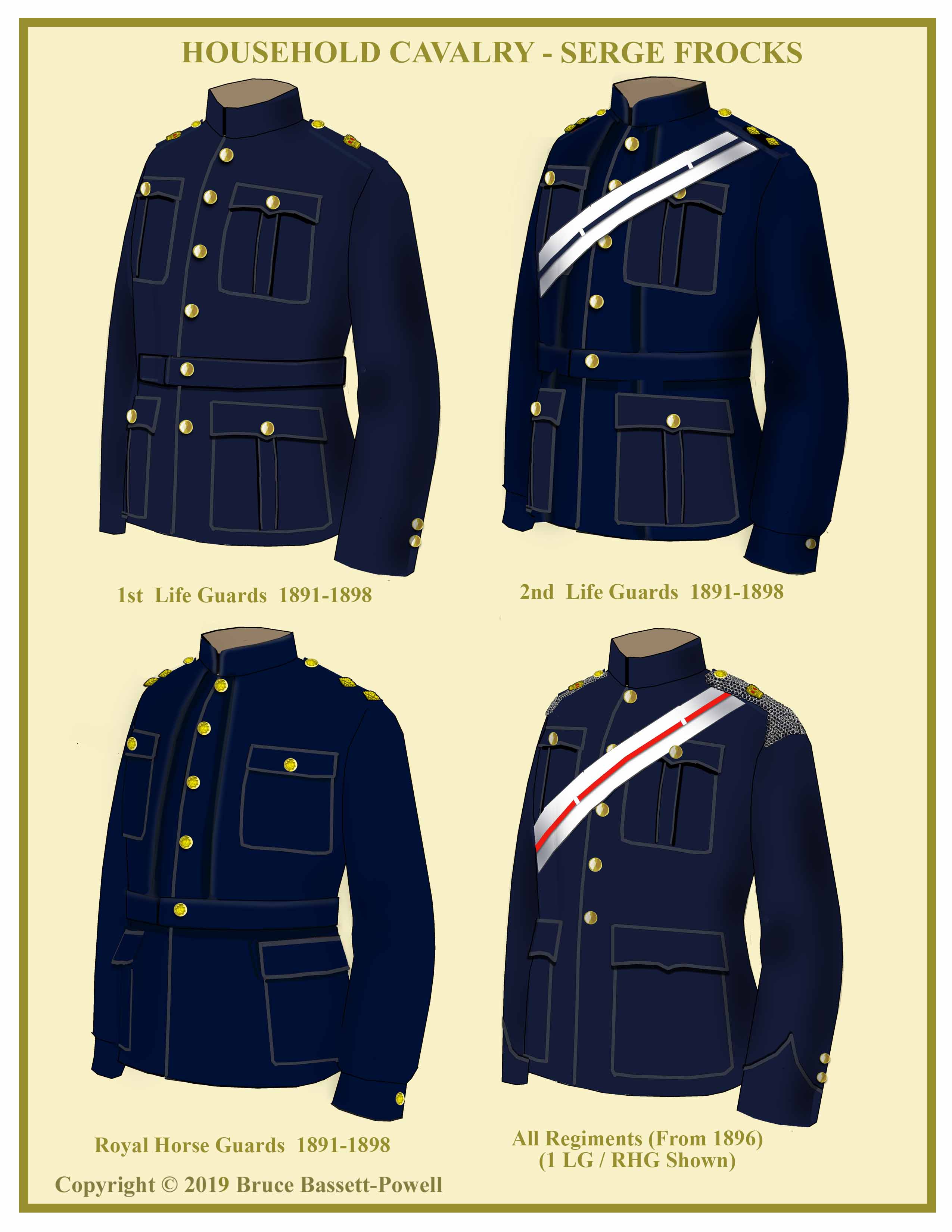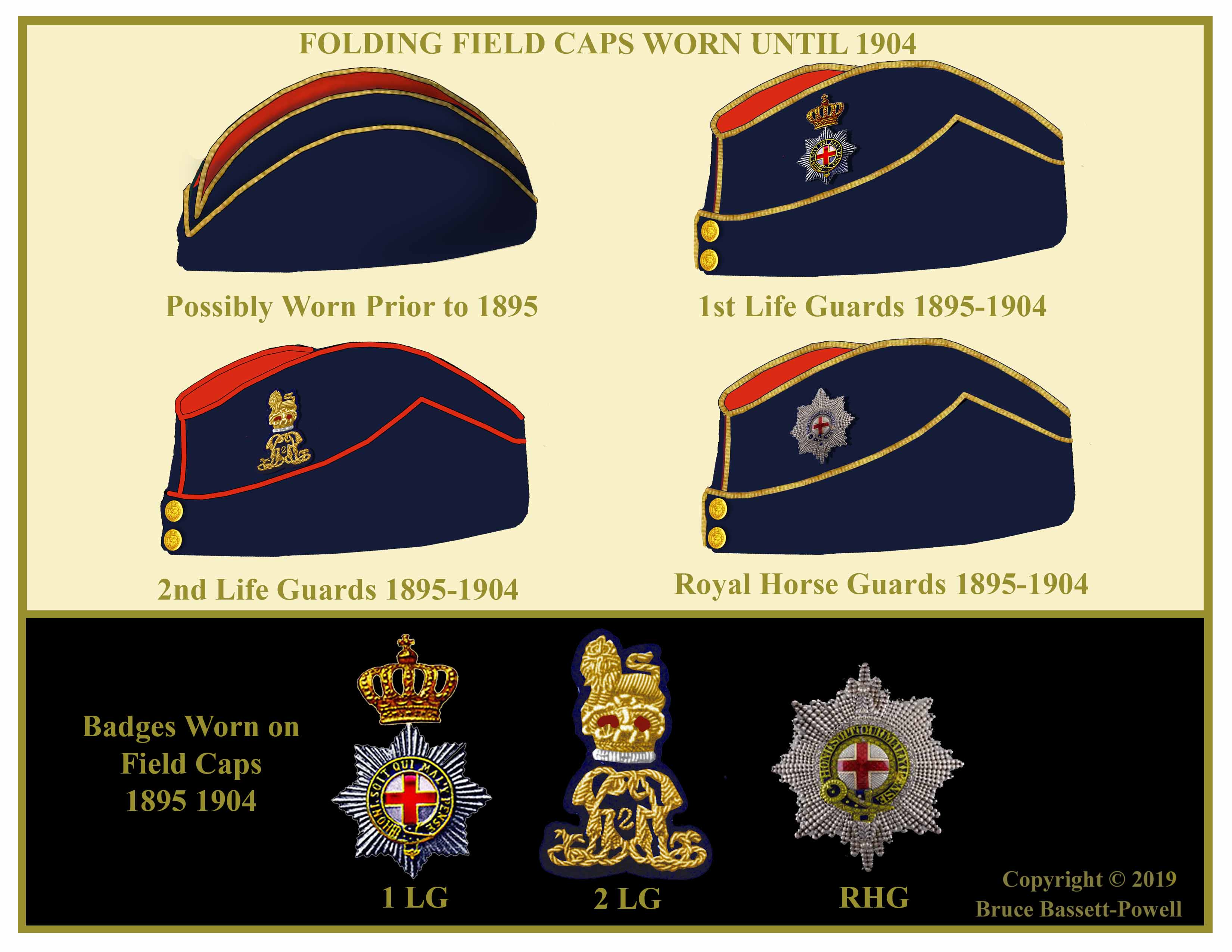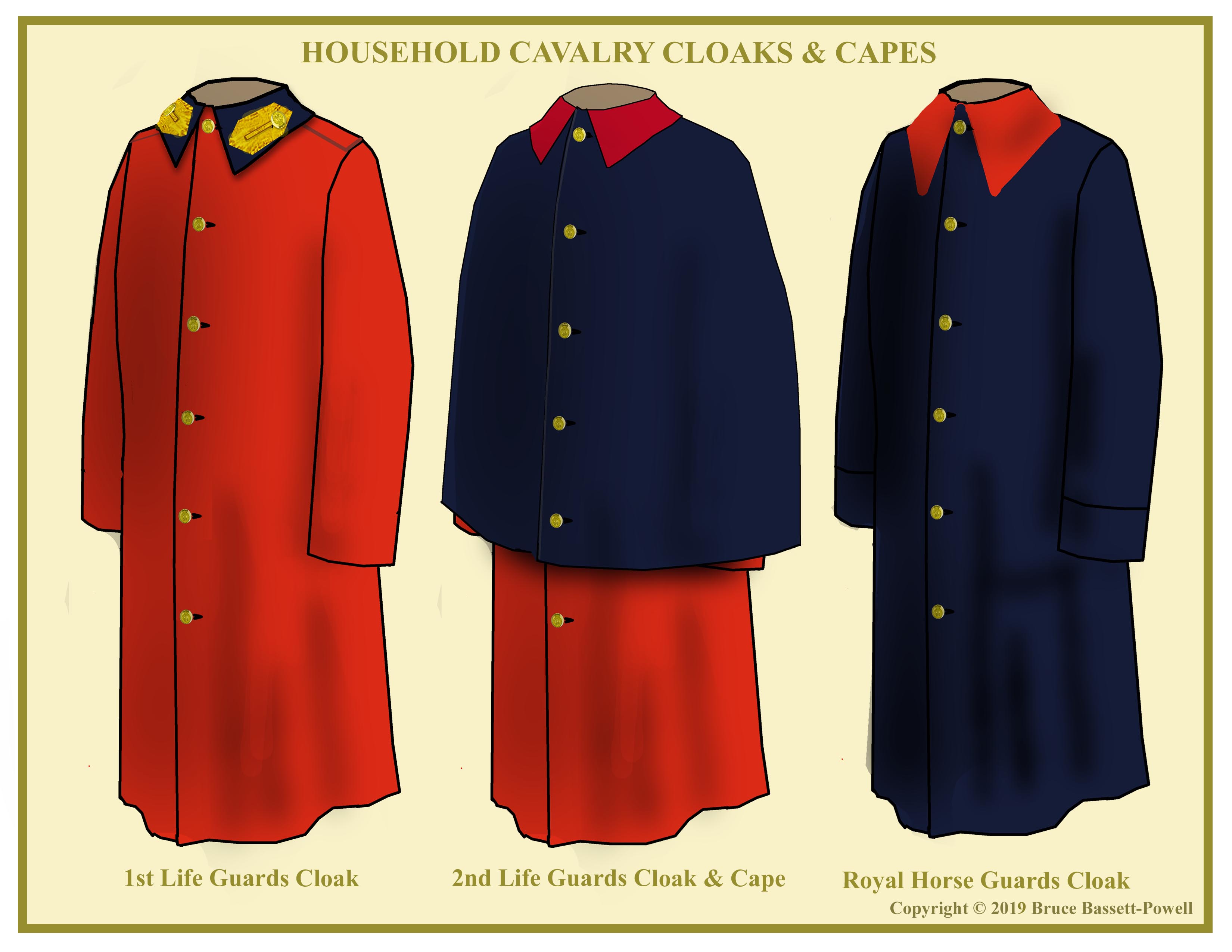UNDRESS UNIFORMS 1881-1902 (PART 2)
UNIFORMS, ARMS & EQUIPMENT - HOUSEHOLD CAVALRY
FIELD SERVICE UNIFORMS
Possibly because the Household Cavalry had not served abroad since the Napoleonic Wars, the dress committees at the War Office found no reason for them to wear active service uniforms. The Dress Regulations of 1883 give no details of any kind of serge frock or jacket for active service. Officers of all three regiments who served in the Egyptian campaign of 1882 wore frocks that were privately tailored in scarlet for the Life Guards and blue for the Horse Guards. For the ensuing campaign in the Sudan khaki was worn for the most part while those officers of the Camel Corps wore grey serge. These uniforms are not part of this study.
Blue serge frocks were authorized in the 1891 regulations which generally followed the style of such garments in the rest of the cavalry. There were differences between the 1st and 2nd Life Guards in that the 1st Regiment had six buttons down the front and plain cuffs and the 2nd Regiment had five buttons in front and cuffs buttoned at the wrist. The patch pockets at the breast and below the belt had buttoned flaps with boxed pleats. The Horse Guards wore a frock more like that of the heavy cavalry (as directed in the regulations) with small differences for that regiment.
The 1900 regulations described similar serge frocks for all three regiments except that the 1st and 2nd Life Guards seem to have swapped styles with the 1st Regiment having cuffs buttoned at the wrist and the 2nd Regiment having plain cuffs. The Royal Horse Guards wore a frock similar to the one of 1891.
The 1996 pattern frock worn by the rest of the cavalry was added in the 1900 regulations with an asterisk (for some reason) which, according to photographs was the preferred item to wear.
FIELD SERVICE CAPS
As with the serge frocks, the 1883 Dress regulations did not refer to an active service field cap and nor did the 1991 Regulations. The Torin (or Austrian pattern) cap does not appear in many photographs but a photo of several Household Cavalry officers newly arrived home from Egypt clearly show one on the heads of two of them. It has been suggested that they wore the current pattern of Staff field cap was worn by Household officers. The 1900 regulations do describe the 1896 pattern folding cap which has a blue body and flaps with a scarlet top edged in gold lace for the 1st Life Guards and Royal Horse Guards and with scarlet piping instead of gold on then caps of the 2nd Life Guards. All three regiments wore a badge on the cap. The 1st LG had a Garter Star surmounted by a Guelphic Crown, The 2nd LG had a bullion badge with LG reversed and intertwined, a “2” within the Cypher and the Royal Crest above. The RHG had a simple Garter Star.
CLOAKS & CAPES
The cloaks and capes worn by the Household cavalry receive somewhat short shrift in the Dress Regulations throughout the period. The 1st and 2nd Life Guards were to have scarlet cloaks with blue cloth capes. The former with blue cloth collar on the cape and the 2nd Life Guards with scarlet collar. The Royal Horse Guards were to have scarlet collars on the cloaks, with no mention of capes.
Not mentioned in the regulations was that the 1st Life Guards had gold lace patches on the blue collars secured with a gold gimp cord and button. They continue to have them to this day. The 2nd Regiment do not appear to have had them. Photographs of Royal Horse Guard officers of the period show much larger collars that the 1st and 2nd Life Guards. The blue cape for the two Life Guards regiments seems odd, but I have found no evidence to the contrary





